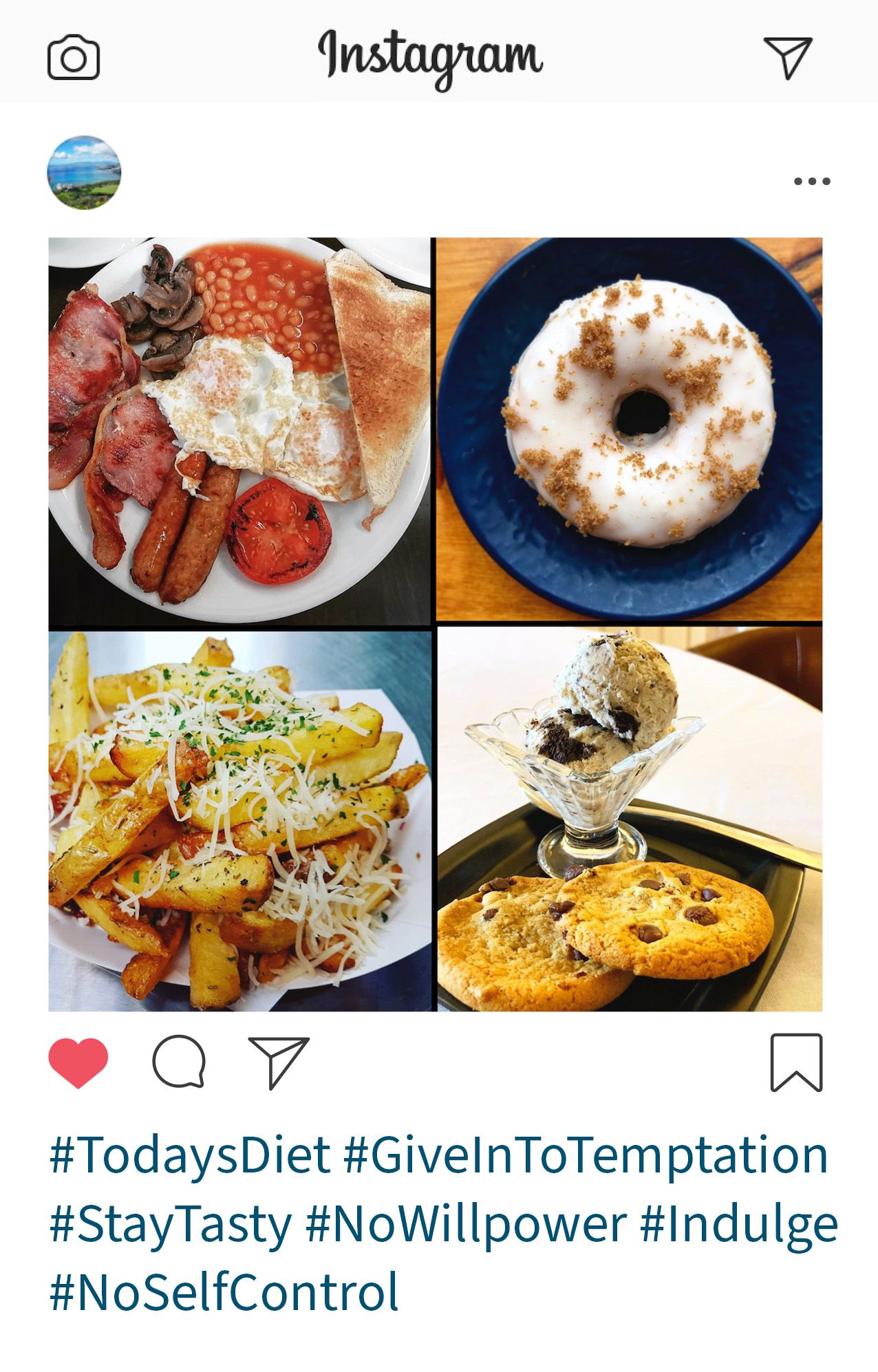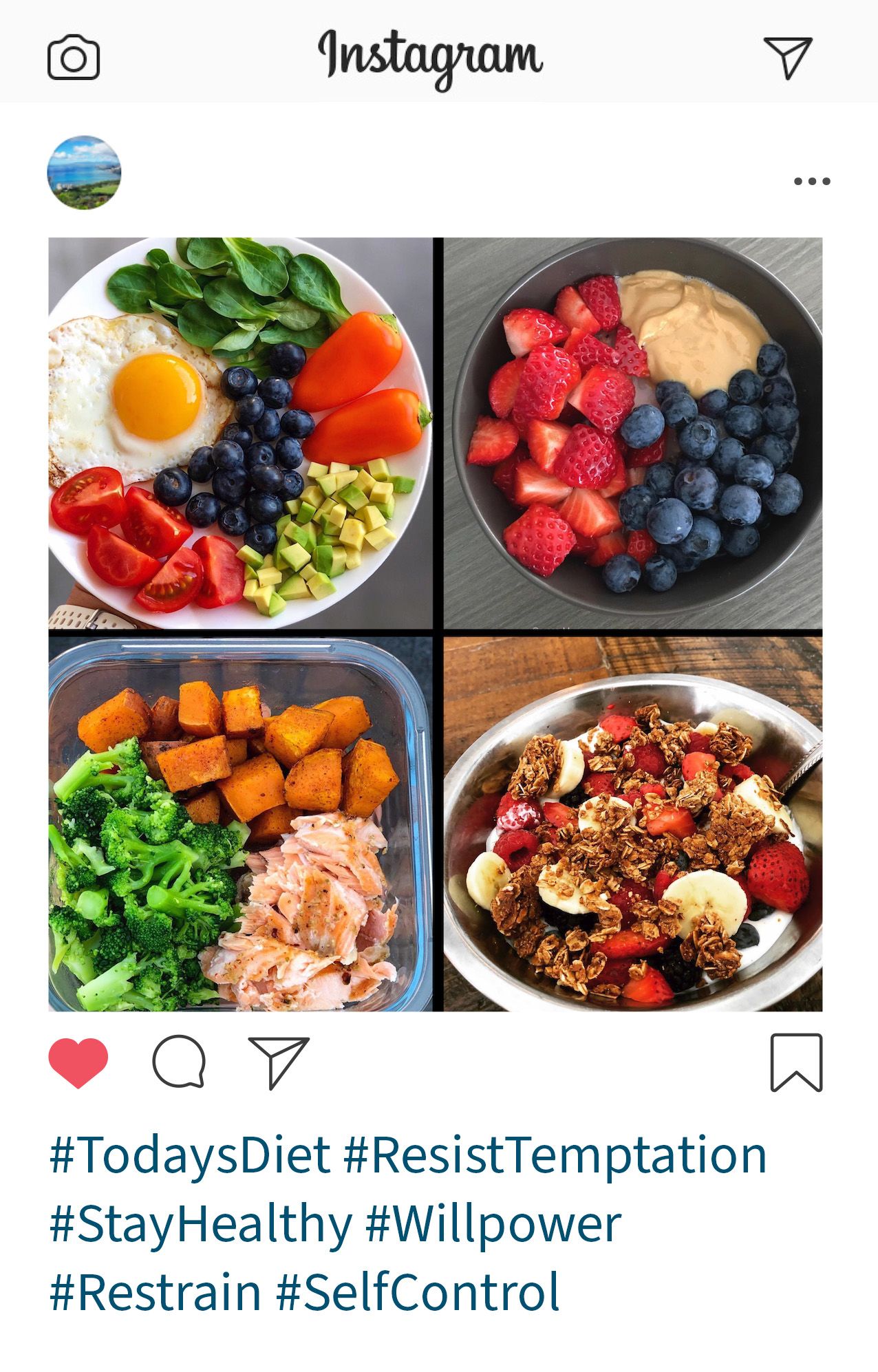Bad influencer effect
Social influencers posting about self-indulgence can be a turn-off for consumers who value different goals
By Sherri Buri McDonald, University Communications

Social posts about binge-watching Netflix or polishing off a triple-layer chocolate cake might grab people’s attention and garner some likes, but they don’t always result in more followers.
In a recent paper, marketing researchers at the University of Oregon and Northwestern University explained that nuance and coined the term “bad influencer effect.” Consumers are less willing to connect with people who post about their indulgences on social media when that behavior conflicts with the goals valued by the consumer.
Earlier research found that people who posted about their indulgences seemed warm and authentic, both factors known to drive social media engagement. The new research delves deeper, revealing the strong role that consumers’ goals play in their online connections.
The takeaway for marketers and social influencers, also known as content creators, is to get to know the goals of the consumers they’re trying to reach before posting content.
The researchers also found that although most social media research lumps together all forms of engagement—likes, comments, shares, follows and purchase intentions—deeper insights might be gained by analyzing those outcomes separately.

Jessica Gamlin, assistant professor of marketing, UO Lundquist College of Business
Jessica Gamlin, assistant professor of marketing, UO Lundquist College of Business
“Our paper suggests that different kinds of engagement on social media might warrant different investigations,” said Jessica Gamlin, an assistant professor of marketing at the UO’s Lundquist College of Business.
“This is especially timely with the emergence on social of ‘rage baiting’—content that enrages people, resulting in a flurry of comments,” Gamlin said. “For a marketer, there’s a big difference between short-term engagement, like a quick comment expressing one’s anger, and long-term engagement, such as someone connecting with a content creator and following their feed.”
Longer-term forms of social engagement are the gold standard for brands and a reason why marketers spend more than $30 billion worldwide on social influencers to build an audience and steer it to certain products or services.
Gamlin collaborated on the paper with Maferima Touré-Tillery, an associate professor of marketing at Northwestern University’s Kellogg School of Management. It recently appeared in The Journal of the Academy of Marketing Science.
“For a marketer, there’s a big difference between short-term engagement, like a quick comment expressing one’s anger, and long-term engagement, such as someone connecting with a content creator and following their feed.”
To test the role that goals play when people engage with social media, Gamlin and Touré-Tillery conducted a series of studies monitoring consumers’ response to social posts showing “indulgent” and “self-controlled” behaviors. For example, consumers were asked how willing they were to connect with someone posting about indulgent versus healthy eating; spending time mindlessly versus mindfully; and using profane versus proper language.

An Instagram post displaying indulgent behavior.

An Instagram post displaying self-controlled behavior.
The studies involved several popular social media platforms, including Instagram, X (formerly known as Twitter) and Facebook.
Many think of social media as a free-for-all where people are easily nudged to click on content and make purchases. It’s not that simple, the researchers found, and it pays for brands to better understand consumers’ goals.
“It’s not just a one-way interaction; it’s two-way,” Gamlin said. “Managers and content creators can leverage the survey and polling tools of their social media platform to learn more about the goals of their audience. Then they can develop a strategic approach to posting that fits those goals. Finally, managers need to continually monitor the social posts to ensure the strategic partnership with the content creator is meeting their marketing objectives.”
Gamlin began the research years ago as a doctoral student at Northwestern University. The topic appealed to her because she's interested in what motivates people toward their goals and how goals are connected to behavior and identity.
“Social media is such a dynamic, rapidly evolving space that it just can’t be ignored,” she added.
“As a consumer psychology researcher, I was curious to know if a person’s goals played any role in the connections they made on social,” Gamlin said. “Our research shows they play a strong role and really drive the online connections people make.”
This research was partially funded by the John and Emiko Kageyama Endowment Fund.

An Instagram post displaying indulgent behavior.
An Instagram post displaying indulgent behavior.

An Instagram post displaying self-controlled behavior.
An Instagram post displaying self-controlled behavior.

